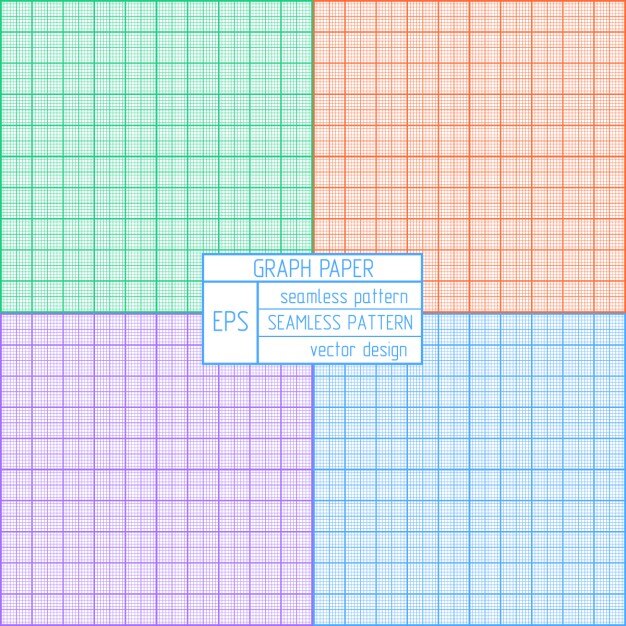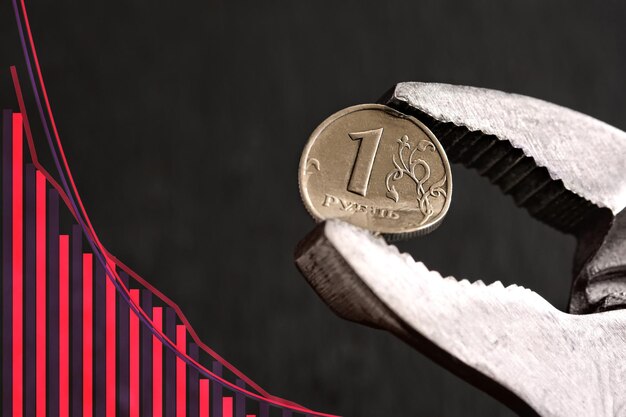Chart Patterns Cheat Sheet – A Complete Guide to Understanding and Recognizing Chart Patterns
Trading in the financial markets can be both exciting and challenging. As traders, we constantly strive to make sense of the complex and ever-changing nature of price movements. One powerful tool that can assist us in this endeavor is the recognition of price patterns. These patterns provide valuable clues about the future direction of prices and can be used to make informed trading decisions.
By carefully analyzing historical price data, traders can identify recurring patterns that indicate potential changes in market trends. These patterns can take various forms, ranging from simple geometric shapes to more complex formations. Understanding these patterns is like deciphering a secret language that the market is whispering to us. It allows us to gain insights into market psychology and anticipate future price movements.
Recognizing price patterns requires a combination of discipline, patience, and keen observation. It involves studying the relationships between price levels, the duration of trends, and the volume of trading activity. By honing our skills in pattern recognition, we can enhance our ability to spot high-probability trading opportunities and increase our chances of success in the markets.
This comprehensive guide aims to serve as a go-to resource for traders looking to understand and identify commonly occurring price patterns. It provides a collection of visual examples, along with detailed explanations and insights into the underlying dynamics of each pattern. Whether you are a novice trader seeking to develop a solid foundation or an experienced professional looking to sharpen your skills, this guide will offer valuable insights and practical tips to improve your trading performance.
Let us embark on this journey of exploration and discovery as we delve into the fascinating world of price pattern analysis. Together, we will unlock the secrets of the charts and uncover the hidden opportunities that lie within. Armed with knowledge and a discerning eye, we will navigate the markets with confidence and precision, turning price patterns into powerful tools for success.
Understanding Chart Patterns: A Comprehensive Guide for Traders
Building a strong foundation in chart analysis is vital for traders seeking to make informed decisions in the financial markets. This comprehensive guide aims to provide traders with an in-depth understanding of the various chart patterns that emerge in market data, enabling them to identify potential opportunities and manage risks effectively. By recognizing and interpreting these patterns, traders can gain valuable insights into market trends and increase their chances of achieving profitable trading outcomes.
Recognizing Patterns: Unveiling Hidden Clues in Market Data
Patterns in market data are like puzzle pieces that, when combined, reveal a clearer picture of the market’s direction. By studying historical price movements, traders can spot recurring patterns that indicate the presence of certain market forces. These patterns can take various forms, such as triangles, rectangles, head and shoulders, or double tops, each conveying valuable information about the market sentiment and potential future price movements. Traders who possess the ability to recognize and interpret these patterns gain a competitive edge in predicting market behavior and making well-informed trading decisions.
Analyzing Price Patterns: Tools for Effective Decision Making
Analyzing chart patterns involves utilizing a combination of technical analysis tools and indicators to confirm the validity of a pattern and determine its potential implications. From trend lines and moving averages to oscillators and volume indicators, traders have an array of tools at their disposal. This guide will delve into the application and significance of these tools in identifying chart patterns and understanding their emergence within the broader market context. By mastering these analysis techniques, traders can enhance their ability to navigate the markets with confidence and precision.
Common Chart Patterns: The Basics
In this section, we will delve into the fundamental concepts of common patterns that appear in financial charts, offering a comprehensive understanding of their significance and interpretation. By exploring various chart patterns, you will gain valuable insights into price movements and potential future trends in the market.
The Power of Trends
Before we dive into specific chart patterns, it is essential to grasp the significance of trends. Trends are the cornerstone of technical analysis, enabling traders and investors to identify the direction in which a market, stock, or asset is moving. Whether it is an uptrend (a series of higher highs and higher lows) or a downtrend (a series of lower highs and lower lows), recognizing trends is a crucial skill.
Continuation Patterns
Continuation patterns are chart patterns that indicate a temporary pause in an existing trend before it resumes. These patterns suggest that the market is catching its breath or consolidating before the dominant trend reasserts itself. They can provide valuable entry and exit points for traders, helping them ride the waves of the ongoing trend.
- Flag Pattern: The flag pattern appears as a small rectangular shape followed by a sharp price movement in the same direction as the prior trend. This pattern signifies a short-term consolidation before the trend continues.
- Pennant Pattern: The pennant pattern resembles a small symmetrical triangle formed by converging trendlines. It represents a brief pause in the market trend, suggesting that the price will continue moving in the same direction after the pattern completes.
- Rectangle Pattern: The rectangle pattern is a horizontal consolidation between parallel support and resistance levels. It indicates a temporary equilibrium between buyers and sellers before the prevailing trend resumes.
Reversal Patterns
Reversal patterns are chart patterns that indicate a potential change in the prevailing trend. These patterns often highlight exhaustion of the current trend and the possibility of a new trend emerging in the opposite direction. Traders closely monitor these patterns to anticipate trend reversals and capitalize on new market opportunities.
- Head and Shoulders Pattern: The head and shoulders pattern consists of three consecutive peaks, with the middle peak (head) being higher than the other two (shoulders). This pattern suggests a shift from an uptrend to a downtrend and provides a potential selling opportunity.
- Double Top/Bottom Pattern: The double top pattern is formed by two peaks at approximately the same price level, indicating a potential trend reversal. Conversely, the double bottom pattern consists of two troughs at similar levels, suggesting a potential trend reversal from a downtrend to an uptrend.
- Ascending/Descending Triangle Pattern: The ascending triangle pattern features a horizontal resistance level and an upward-sloping support line. It implies a potential trend reversal from a downtrend to an uptrend. Conversely, the descending triangle pattern exhibits a downward-sloping resistance line and a horizontal support level, indicating a potential trend reversal from an uptrend to a downtrend.
By understanding these common chart patterns, traders can enhance their ability to interpret market movements and make informed trading decisions. It is crucial to note that chart patterns should be used in conjunction with other technical indicators and risk management strategies to maximize their effectiveness.
Trend Reversal Chart Patterns: Spotting Potential Market Changes
In this section, we will explore the concept of identifying trend reversal chart patterns, which can provide valuable insights into potential market changes. By analyzing these patterns, traders and investors can gain a better understanding of market dynamics and make informed decisions.
Recognizing Key Reversal Patterns
One of the essential skills in technical analysis is the ability to identify key reversal patterns. These patterns indicate a potential change in the direction of a market trend. By recognizing these patterns early on, traders can position themselves to take advantage of upcoming market shifts.
Interpreting Market Signals
Effectively interpreting market signals is crucial in spotting potential trend reversals. Analyzing price action, volume fluctuations, and other indicators can provide valuable insights into the strength and validity of a trend reversal. By understanding these signals, traders can gain a competitive edge in the market and improve their trading strategies.
Continuation Chart Patterns: Identifying Trends in Progress
Continuation chart patterns help traders and investors identify ongoing trends in the market. By recognizing these patterns, market participants can anticipate the continuation of existing trends, enabling them to make informed decisions about their trades and investments.
The Importance of Identifying Continuation Chart Patterns
Identifying continuation chart patterns is crucial for traders and investors who aim to capitalize on sustained market trends. These patterns indicate a temporary halt in the ongoing trend, followed by a resumption of the same trend. By spotting these patterns, market participants can have a higher probability of successful trades and investments.
The Most Common Continuation Chart Patterns
| Pattern Name | Description |
|---|---|
| Flag | A small rectangle-shaped pattern that forms after a sharp price movement, indicating a pause in the trend before it continues in the same direction. |
| Triangle | A triangular pattern that forms as the market consolidates within a narrowing range, signaling a potential continuation of the previous trend once the breakout occurs. |
| Wedge | A pattern characterized by converging trend lines, resembling a wedge shape. This pattern indicates a temporary pause in the trend before it eventually resumes in the same direction. |
| Pennant | A small symmetrical triangle pattern that forms after a sharp price movement, suggesting a brief consolidation phase before the trend continues. |
| Cup and Handle | A pattern that resembles a cup with a handle, indicating a period of consolidation before the market resumes the previous uptrend. |
These are just some of the continuation chart patterns that traders and investors can utilize to identify trends in progress. By applying technical analysis and carefully observing the price action, it becomes possible to spot these patterns and make informed decisions based on the expected continuation of the trend.
Breakout Chart Patterns: Navigating Key Price Levels
In this section, we will explore breakout chart patterns, which serve as valuable tools for identifying and navigating key price levels in financial markets. By understanding and recognizing these patterns, traders can gain insights into potential price movements and make informed trading decisions.
1. Characteristics of Breakout Chart Patterns
- Breakout chart patterns occur when an asset’s price breaks through a significant support or resistance level.
- These patterns signal a shift in market sentiment and often lead to substantial price movements.
- Breakouts can occur in both bullish (upward) and bearish (downward) trends.
- Traders closely monitor these patterns to identify potential opportunities for profit.
2. Types of Breakout Chart Patterns
There are several common types of breakout chart patterns that traders should become familiar with:
- Head and Shoulders: This pattern consists of three peaks, with the middle peak being higher (the head) and the two surrounding peaks being lower (the shoulders). A breakout below the neckline of this pattern indicates a potential downward price movement.
- Ascending Triangle: This pattern forms when there is a series of higher lows and a horizontal resistance level. A breakout above the resistance level suggests a potential bullish move.
- Descending Triangle: The opposite of the ascending triangle, this pattern features a series of lower highs and a horizontal support level. A breakout below the support level indicates a potential bearish move.
- Rectangle: In this pattern, the price trades within a range, forming both a horizontal support and resistance level. A breakout above the resistance or below the support suggests a potential significant price movement.
By understanding the characteristics and recognizing these breakout chart patterns, traders can effectively navigate key price levels and increase their chances of making successful trading decisions.
Chart Pattern Trading Strategies: Tips and Best Practices
In this section, we will explore various strategies and techniques for effectively trading chart patterns. By understanding and implementing these tips and best practices, you can enhance your trading skills and increase your chances of success in the market.
1. Analyze the Context
Before executing a trade based on a chart pattern, it is crucial to consider the broader market context. This involves analyzing the overall trend, market sentiment, and key support and resistance levels. Understanding the context will provide you with valuable insights into the potential viability and profitability of a chart pattern trade.
2. Combine Chart Patterns with Other Indicators
While chart patterns are powerful on their own, combining them with other technical indicators can further strengthen your trading strategy. Use indicators such as moving averages, oscillators, or volume analysis to confirm the signals provided by chart patterns. This combination can help filter out false signals and increase the accuracy of your trades.
3. Proper Risk Management
Implementing proper risk management practices is essential when trading chart patterns. Set realistic stop-loss levels to limit potential losses and protect your capital. Use proper position sizing techniques that align with your risk tolerance and the size of your trading account. By managing risk effectively, you can safeguard your trading capital and preserve your long-term profitability.
4. Continuous Learning and Adaptation
The world of chart pattern trading is ever-evolving, with new patterns and market dynamics constantly emerging. It is crucial to stay updated with the latest developments in chart patterns and trading strategies. Continuously learn from experienced traders, attend webinars, read books, and stay connected with the trading community. Adaptation to changing market conditions and continuous improvement is key to long-term success in chart pattern trading.
In conclusion,
By following these tips and best practices, you can develop a solid foundation for successfully trading chart patterns. Remember to analyze the context, combine chart patterns with other indicators, implement proper risk management, and continuously learn and adapt. With time and practice, you can become proficient in recognizing and capitalizing on chart patterns to achieve consistent trading success.
Questions and answers: Chart patterns cheat sheet
What are chart patterns?
Chart patterns are specific formations or shapes that appear on price charts in technical analysis. They indicate potential trading opportunities and help traders predict future price movements.
Why is understanding chart patterns important for traders?
Understanding chart patterns is important for traders as it allows them to identify potential market trends, make informed trading decisions, and manage risk effectively. Chart patterns provide valuable information about the psychology of market participants and can help traders anticipate price movements.
How can I recognize chart patterns?
Recognizing chart patterns requires studying different types of patterns and familiarizing yourself with their characteristics. Some common chart patterns include head and shoulders, double top, double bottom, ascending triangle, descending triangle, and many more. By analyzing historical price data, traders can identify these patterns and use them to guide their trading strategies.
Are chart patterns reliable indicators for predicting price movements?
Chart patterns are generally considered reliable indicators for predicting price movements. However, it is important to note that no indicator or pattern is 100% foolproof, and traders should always consider other technical and fundamental factors before making trading decisions. Chart patterns should be used in conjunction with other analysis tools to increase the probability of accurate predictions.
What is a candlestick pattern, and how is it used in trading?
A candlestick pattern is a visual representation of price movements over a specific time period, commonly used in trading to analyze market sentiment and predict future price movements.
Can you explain the significance of candlestick patterns in the crypto market?
Candlestick patterns provide valuable insights into the behavior of crypto assets, helping traders identify potential reversal points, trends, and market psychology.
How do candlestick patterns differ between the crypto and forex markets?
While candlestick patterns function similarly in both markets, the nuances of trading cryptocurrencies versus forex may lead to variations in their interpretation and effectiveness.
What are some common trading patterns observed in candlestick analysis?
Common trading patterns observed in candlestick analysis include engulfing patterns, doji patterns, hammer patterns, and morning/evening star patterns, among others.
How do traders utilize candlestick patterns in forex trading?
Forex traders use candlestick patterns to identify potential entry and exit points, confirm trend reversals, and manage risk by interpreting the patterns within the context of the broader market.
What role do candlestick patterns play in predicting price moves?
Candlestick patterns serve as valuable indicators for predicting future price moves by providing insights into market sentiment, supply and demand dynamics, and the balance of power between buyers and sellers.
Can you provide examples of how specific candlestick patterns signal potential price moves?
For instance, a bullish engulfing pattern may signal a reversal from a downtrend to an uptrend, while a shooting star pattern could indicate a potential reversal from an uptrend to a downtrend.
How do traders incorporate candlestick patterns into their trading strategies?
Traders incorporate candlestick patterns into their trading strategies by combining them with other technical indicators, such as moving averages or support/resistance levels, to make informed trading decisions.
Are there any limitations or challenges associated with relying solely on candlestick patterns for trading?
While candlestick patterns offer valuable insights, they may sometimes produce false signals or lead to misinterpretations, emphasizing the importance of using them in conjunction with other analytical tools.
What resources are available for traders to learn more about candlestick patterns and their application in trading?
Traders can access educational materials, books, online courses, and trading platforms offering charting tools and analysis features to deepen their understanding of candlestick patterns and enhance their trading skills
What is a crypto chart, and how does it play a role in trading?
A crypto chart is a visual representation of historical price data for a cryptocurrency, crucial for analyzing past market trends and predicting future price movements.
What does a neutral chart pattern indicate in crypto trading?
A neutral chart pattern suggests a balance between buyers and sellers in the market, often signaling indecision and uncertainty about the future price direction.
Can you explain bullish chart patterns and their significance in crypto trading?
Bullish chart patterns indicate potential upward price trends, signaling opportunities for traders to buy or enter long positions in anticipation of rising prices.
How does past market data contribute to identifying trading patterns?
Past market data provides valuable insights into historical price behavior, helping traders recognize recurring patterns and make informed decisions based on past performance.
What are some cheat sheet ideas for traders looking to identify trading patterns?
Cheat sheet ideas may include a concise summary of common chart patterns, their characteristics, and how to interpret them effectively in trading.
What characterizes a bearish chart pattern, and how is it relevant in crypto trading?
A bearish chart pattern indicates potential downward price trends, suggesting opportunities for traders to sell or enter short positions to profit from falling prices.
What are bilateral patterns, and how do they differ from other chart patterns?
Bilateral patterns are chart formations that do not have a clear bias towards bullish or bearish outcomes, making them challenging to interpret until a breakout occurs in either direction.
How can traders use a candlestick patterns cheat sheet to enhance their trading strategies?
A candlestick patterns cheat sheet provides a quick reference guide for traders to identify common candlestick formations and understand their implications for price action.
Why is it essential to be able to identify chart patterns in crypto trading?
Identifying chart patterns is essential in crypto trading as they offer valuable insights into market sentiment, potential price movements, and optimal entry/exit points for trades.
What role does technical analysis play in identifying and utilizing chart patterns in crypto trading?
Technical analysis involves analyzing historical price data and chart patterns to forecast future price movements, enabling traders to make informed decisions based on market trends and patterns.






No responses yet